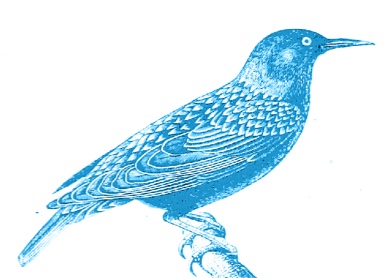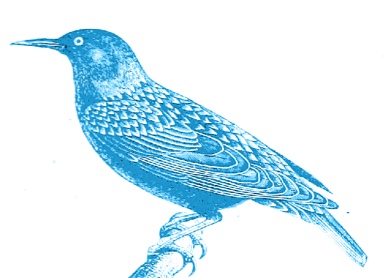Just in time to get into the spirit of Halloween, moms concerned with food allergies met in TheMotherhood on October 25, 2011, to discuss safe and fun ways to handle this food-centric holiday with their children.
Sandra Beasley, author of “Don’t Kill the Birthday Girl: Tales from an Allergic Life,” and Lori Sandler, founder of Divvies Bakery and author of The Divvies Bakery Cookbook, hosted the class and led the conversation with their insights and ideas. Contributing to the discussion were co-hosts Barbara Rosenstein from the Food Allergy Initiative, www.faiusa.org (the world’s largest private source of funding for food allergy research), and Susan Weissman, advocate, writer for the Huffington Post, and past co-host of the Navigating Food Allergies series on TheMotherhood.
Read on for the top seven “spook-tacular” tips discussed during the live chat!
#7: Take the Focus Off of Food
Halloween generally revolves around “treats” – particularly candy, which often is not safe for kids with food allergies. Some parents substitute non-food items like money or toys for candy.
“I’ve been hearing about some inventive ways to approach candy that’s not safe,” said Sandra Beasley. “One parent suggests bringing in the tooth fairy to save the day!” Here is the story: http://alwayssick.com/2011/09/22/trick-or-treating-with-food-allergies/
Julie Pippert said, “This year, for a variety of reasons — food allergies, health, etc. — I got little Halloween themed toys to hand out: erasers, pencils, sticky lizards and spiders, silly little things.”
“Putting emphasis on the costume really helps too,” added Sandra Beasley. “But I love seeing goody baskets that include little notepads, plastic spider rings, etc. Those are cheap & easy to mix in — just go to the party supply section of any dollar store.”
“We do have a tradition in my neighborhood where we take basket of treats to two neighbors in the days before Halloween, ring-and-run, and leave the baskets on the doorstep with a poem asking that they do the same,” said Becki. “We stuff our baskets with fun things like cookie cutters, glow sticks, etc., as well as a few nut-safe candies. That’s a fun tradition that my kids love, and the emphasis is less on the food.”
Pumpkin carving and Halloween crafting and decorating could be another good way to celebrate the season while avoiding food.
“Traditions , such as pumpkin carving, are a wonderful way to make holidays more special,” said Lori Sandler.
#6: Practice Allergy-Friendly Treating
However, you don’t need to leave food completely out of the equation. In addition to treats, Halloween is a big social event – particularly for older kids. Try using the social aspect of the holiday to ensure your child feels included in the activities.
Lori Sandler “always organized a pre-Trick-or-Treating dinner for our sons’ friends and parents. Made all of their favorite foods and desserts … totally allergen-safe for Benjamin and his other friends who have food allergies. This way, everyone felt that they had lots of treats before we even began Trick-or-Treating!”
At the bottom of this page, you can find tips for hosting your own allergy-safe Halloween Boo-fet (Buffet)!
#5: Empower Your Kids
Look at Halloween as an awareness and education opportunity, both for your children and others who might not have food allergies or understand the challenges. We can educate others about food allergy safety and inclusion by example.
Susan Weissman pointed out, “We don’t use Halloween as a time to raise food allergy awareness. We just navigate the challenges of that particular year.”
“That’s why it is so good when you let the kids who come to your door pick their OWN treats, instead of picking out the candy for them,” replied Sandra Beasley. “Give kids the power.”
Julie Pippert suggested a slightly different method. “I tend to hand it out myself, though I’ll let them verbally pick,” she said. “It’s portion control. We get a TON of trick or treaters. I easily buy $40 worth and 10 lbs and run out every year!”
#4: Think of New Uses for Candy
If your child goes trick-or-treating and comes home with a full bag of candy he can’t eat because of food allergies, find another way he can use it.
“Here’s one idea I had based on my own childhood: make a BINGO card for your child’s Halloween experience that includes different brands, types of candy, ‘red wrapper,’ etc.,” suggested Sandra Beasley. “For every row they complete they win a non-food or allergy-friendly prize. This means that even when they go to a house with nothing they can eat, they might be able to get excited about X-ing out a square.”
You can also have your kids use candy as a form of “currency,” or something to trade for allergy-safe items.
At the end of the night on Halloween, Gabrielle’s kids “turn their candy in to us and we take them to the toy store and let them pick out whatever (within reason) toy they would like in place of the candy. Of course, we always keep safe treats in the house for them to enjoy too!”
#3: Safety First
Even with wrapped candy, cross-contamination can occur.
“We have a rule that candy cannot be eaten until we eliminate the unsafe candy, check the quality of the wrappers, and wash hands,” said Julie Trone. “Any wrappers that have been loosened get tossed.”
Added knmtwins, “I deliver safe treats to everyone we know double bagged in Ziplocs. May be obsessive, but haven’t had cross contamination issues since.”
“My strategy is to buy all nut-allergy safe candy and then, at the end of the night, let my daughter trade the unsafe treats she’s picked up from the goodies left over in our candy bowl (all of which I’ve chosen to appeal to her),” said Becki.
And be careful about less obvious risks, like Halloween masks and haunted houses.
Lori Sandler’s son Benjamin broke out in hives once after trying on another child’s latex mask after he had eaten something Benjamin was allergic to.
And Sandra Beasley pointed out, “I can remember being sent through houses that recreated freaky textures using foods (i.e. peeled grapes for eyeballs); they didn’t realize that for me, the REAL terror was getting an unfamiliar food on my hands.”
#2: Be Available at Your Children’s Halloween Parties
To help your children avoid uncomfortable party situations, make yourself available whenever possible to check out the food ahead of time.
Lori Sandler proposed that parents/guardians “plan on attending classroom and out-of-school parties in order to check ingredients of all food being served, and to resolve safety concerns. If you can’t stay for the entire party, be sure to stay long enough to check all of the food ingredients.”
Sandra Beasley shared more tips from her experiences as a child. “If you’re ever dropping a child off into a party environment and you’ve made special arrangements, make sure your kid sees you talking to the person who will be in charge,” she said. “Sometimes a well-meaning parent would tell me ‘oh, you’re fine,’ but I wasn’t comfortable unless I knew my mother had actually talked to the adult. At the same time, I didn’t want to be rude by refusing the parent’s offer. There were some awkward moments. Color-coded plates or bowls that the child knows are ‘safe’ — maybe serving ware they can recognize, with a distinct pattern from home — are also really helpful.”
“It helps to develop a relationship with the other parents in the class beyond friends parents and especially with any room parent,” noted Julie Trone. “I happen to be a bit nervous with other people bringing in food for my sons so I tend to discuss the idea beforehand, then ask if I can add to the classroom treats with safe treats for everyone. This way my children feel included.”
Gabrielle shared, “Yesterday I noticed some snacks on the table that I knew had a nut warning. Luckily I was there and mentioned it, even though my son brings his own personal snack every day just to be safe … I felt bad speaking up, but they were actually glad that I did!”
#1: Take Care of Kids’ Emotional Needs
All of these risks can add up to children feeling sensitive about perceived differences.
Lori Sandler emphasized that above all, when we take care of our children’s hearts first, it helps keep moments like trick-or-treating special and less stressful: “Remember your child’s emotional needs, and be careful about drawing unnecessary attention to his food allergies!”
Susan Weissman supported this point with a personal experience. “I find that younger children need our ‘language suggestions’ for tricky situations. (My) son went on a spooky Halloween walk in a local botanical garden with friends and he needed me to tell him how to say ‘no thank you’ to the spooks handing out candy if he didn’t feel like touching it.”
Sometimes Halloween becomes emotionally easier as children grow up. Lori Sandler of Divvies and Elizabeth from Onespot Allergy have sons who have experienced similar situations. Lori said her son Benjamin, now 13, enjoys Halloween a lot more now since it is more about being with friends rather than collecting tons of candy.
Elizabeth added, “I feel fortunate that my peanut/tree nut allergic son lost interest in trick or treating years ago. His brother is older and doesn’t go out either, so he doesn’t feel he’s missing anything. We also always have candy in the house, so there’s no motivation for him to hoard it at Halloween.”
BONUS! How to Host a Pre-Trick-or-Treating Boo-fet! (Buffet)
Here are some ideas for themes and allergy-friendly treats to feature at a Halloween Boo-fet:
Susan Weissman noted that “kids like the color theme – things that are black and orange even if they aren’t traditional Halloween fare. Could be tangerines and chopped up black licorice in bowls (we find Panda brand is safe).”
Erin suggested looking through The Divvies Bakery Cookbook by Lori Sandler, www.divvies.com, purchase safe candies and small toys, and create Halloween Baskets similar to Easter Baskets.
Lori Sandler asks her son Benjamin to help plan the menu. She noted that “it gave him a great sense of control and distracted him from thinking about what he may not be able to eat later in the evening.”
Julie Pippert shared a recipe for Jack O’Lantern Fruit Cups: http://parentingteens.about.com/od/recipesforkids/r/halloween221.htm
Sandra Beasley loves “the idea of playing with color versus sugar. Roast a mix of purple potatoes and butternut squash! Just preheat the oven to 400 degrees, coat it all in olive oil and salt, and roast away.”
Julie Trone makes a delicious gluten-free pumpkin bread that has been a hit in her home. “It is also dairy, peanut, tree nut, seed, and soy free,” she said.
Resources
Fact sheet for avoiding anaphylaxis on Halloween: http://www.aaaai.org/Aaaai/media/MediaLibrary/PDF Documents/Libraries/EL-food-allergies-halloween-patient.pdf
Tips for handling Halloween parties at school and at home: http://www.kidswithfoodallergies.org/resourcespre.php?id=42
From Barbara Rosenstein, a link to companies (including Divvies) that offer allergy-friendly treats for Halloween and other holidays:
https://www.faiusa.org/sslpage.aspx?pid=661
Making paper pumpkin ornaments: http://www.hostessblog.com/2008/09/diy-project-paper-pumpkin-craft/
Thank you to our wonderful hosts and co-hosts for their insights and suggestions on this important, timely topic!
Sandra Beasley, Don’t Kill the Birthday Girl: Tales from an Allergic Life
Lori Sandler, Divvies
Barbara Rosenstein, Food Allergy Initiative
Susan Weissman, Peanuts in Eden
See the original Talk here: http://tmotherhood.wpengine.com/talk/show/id/62286


Take a Comment. Leave a Comment.
Read More ...
Influencer Marketing Resources: July 2025
Influencer Marketing Resources: June 2025
Influencer Marketing Resources: May 2025